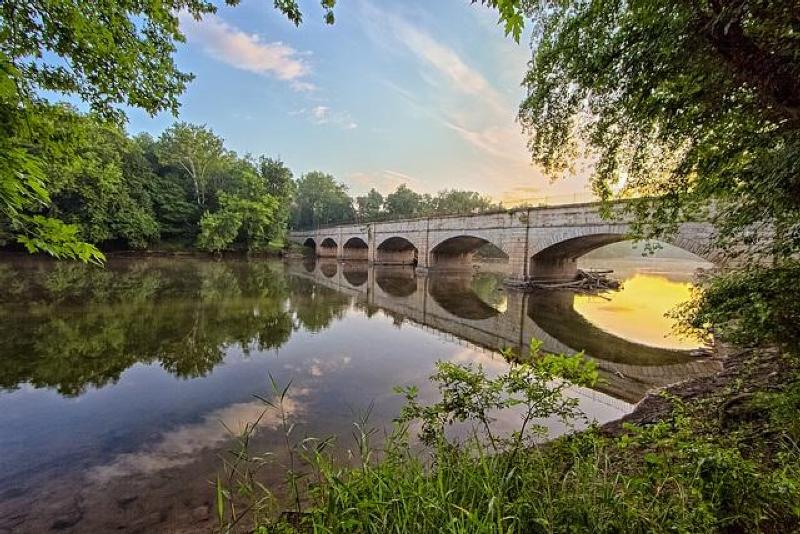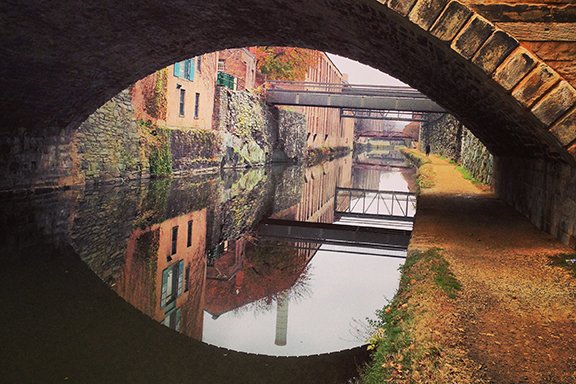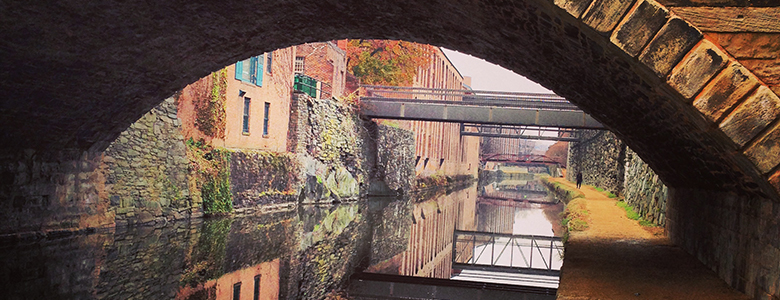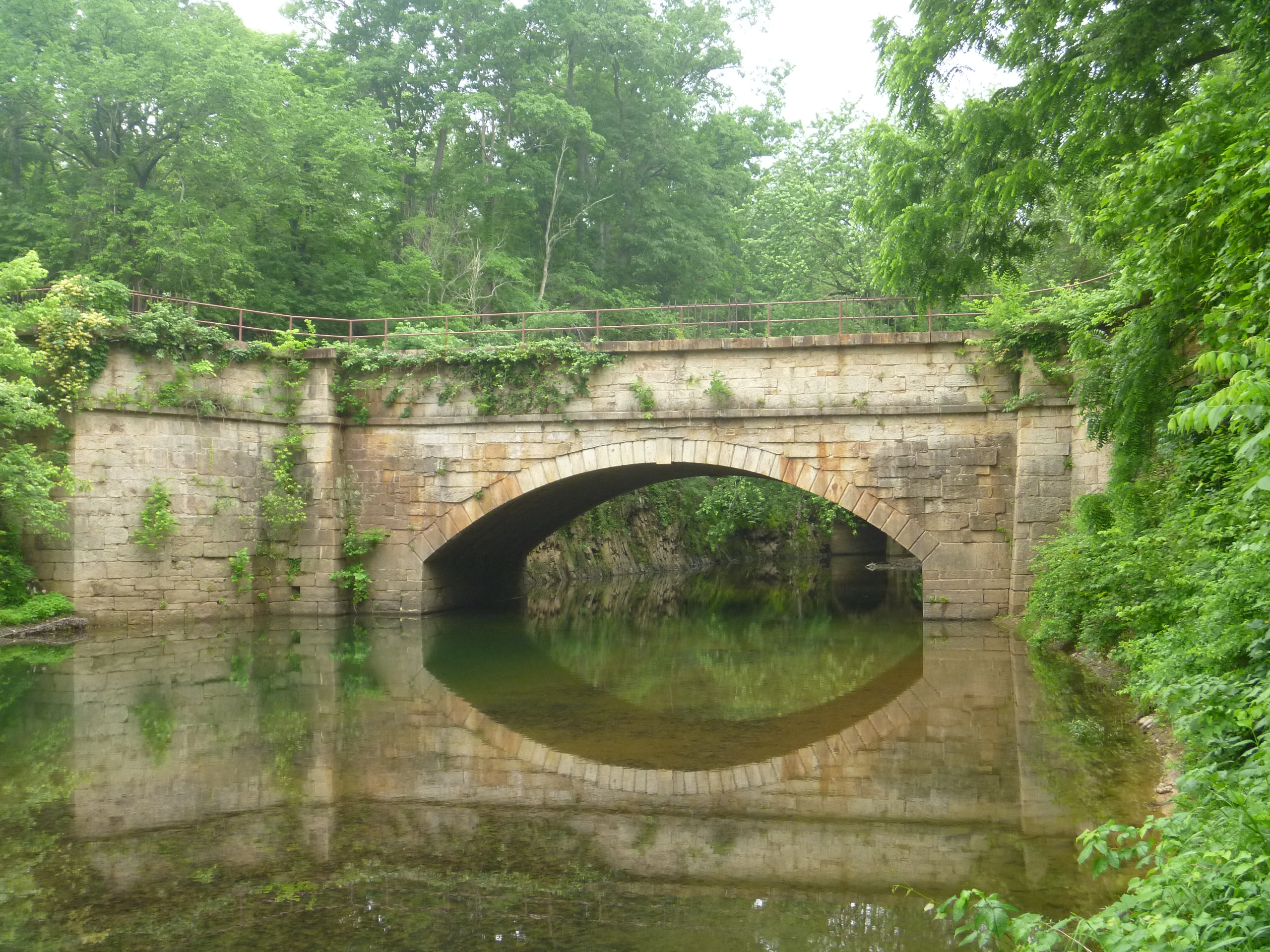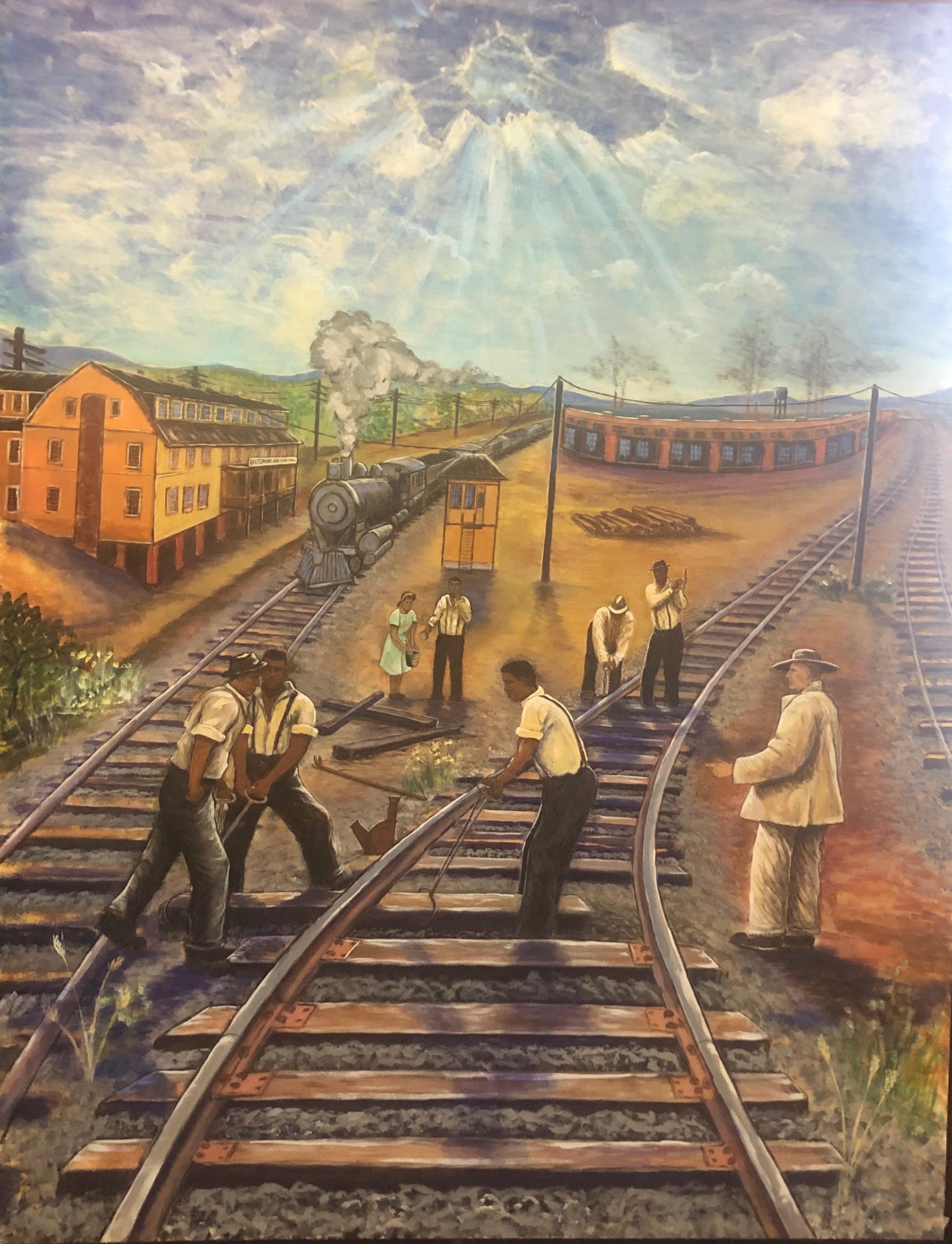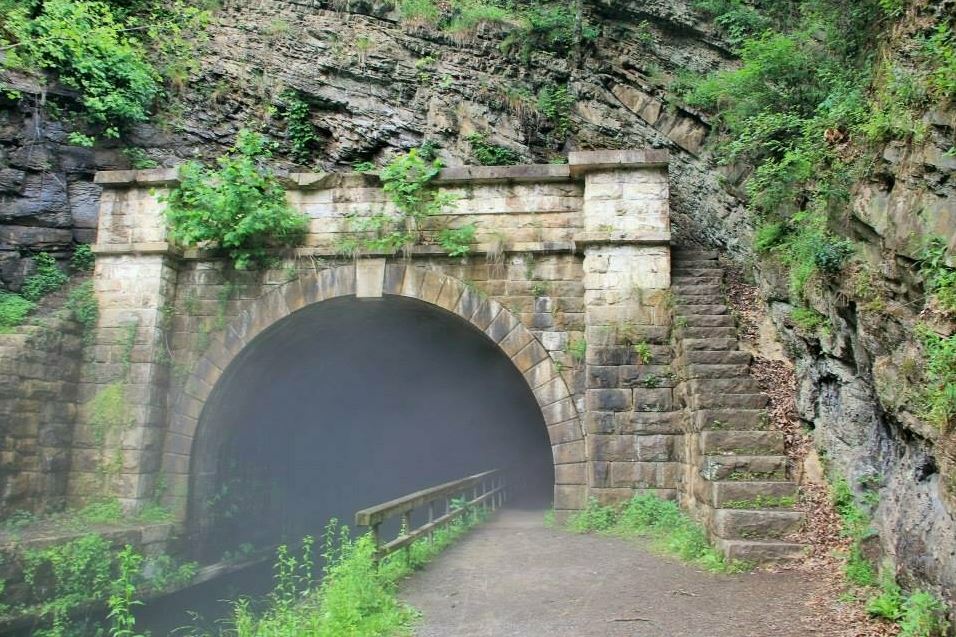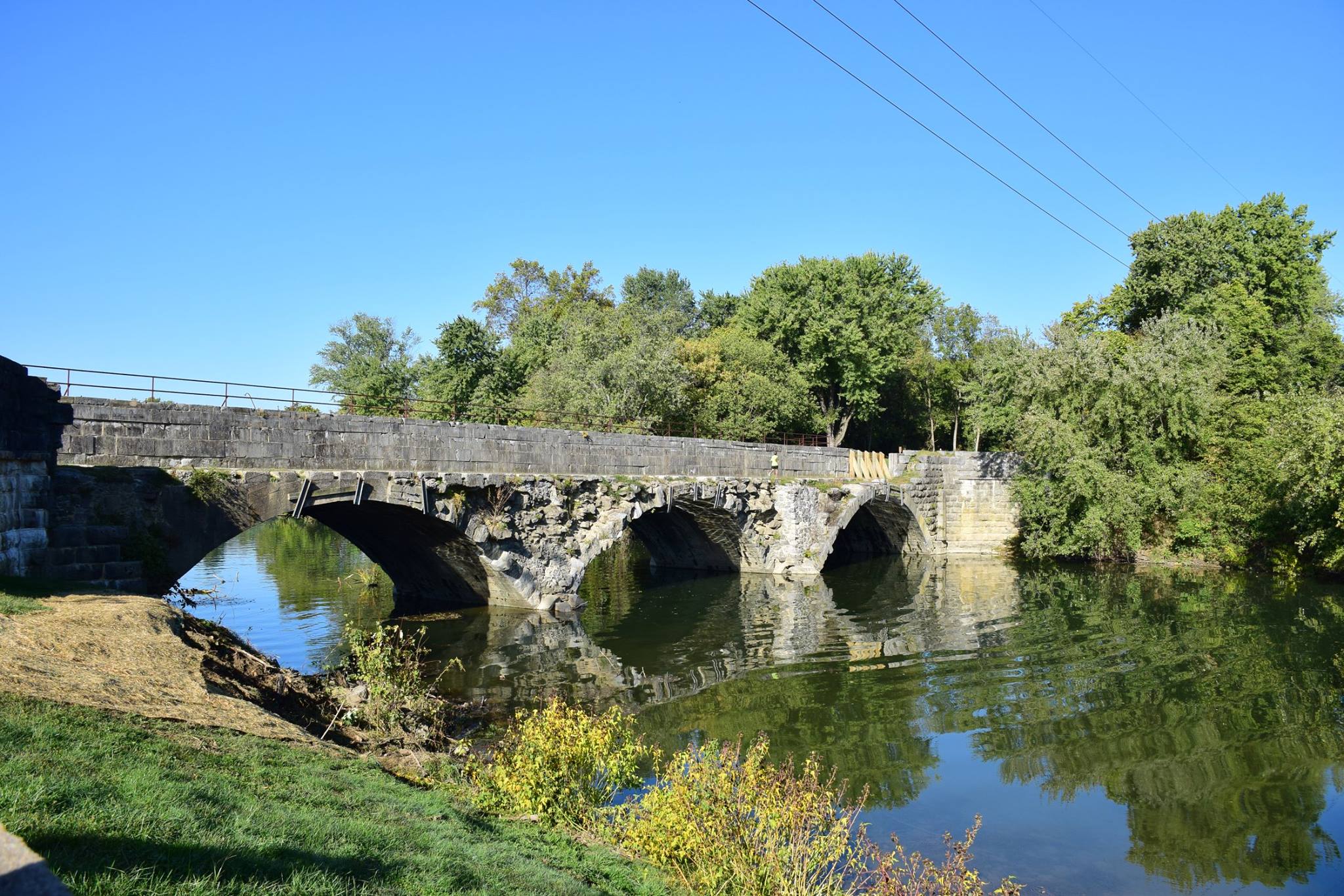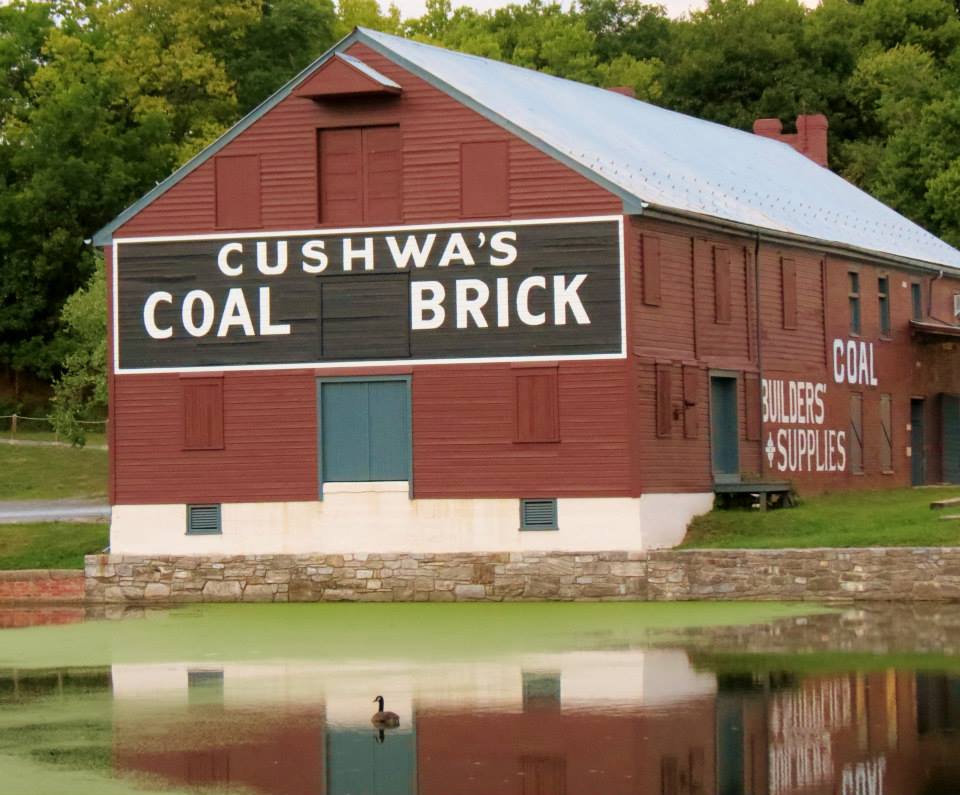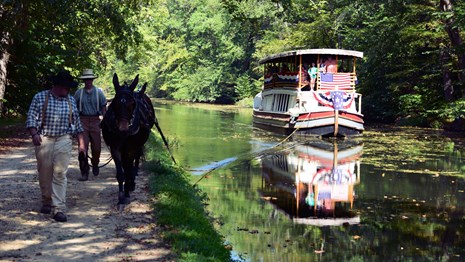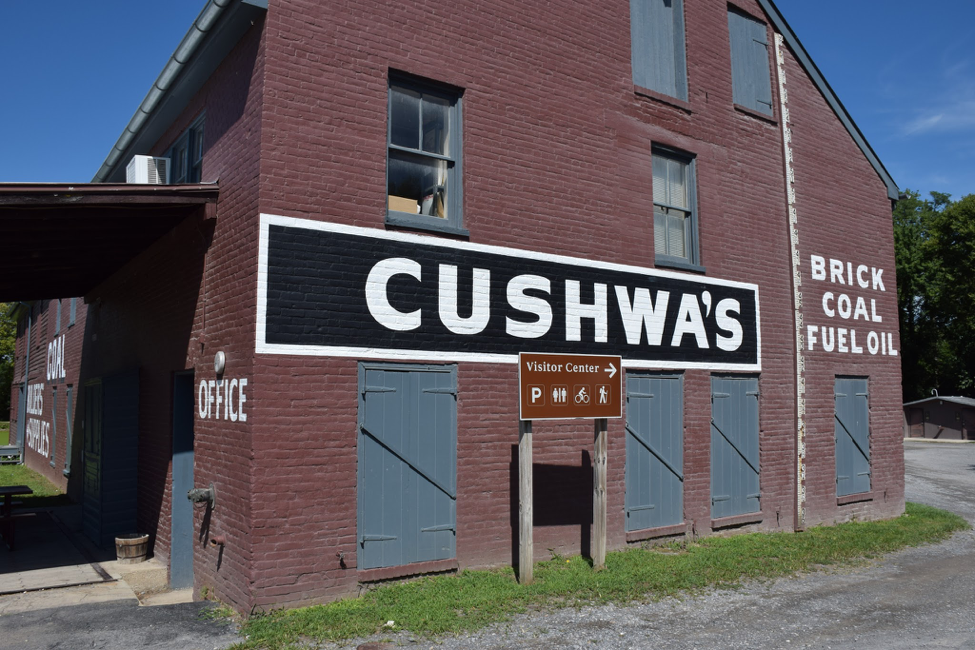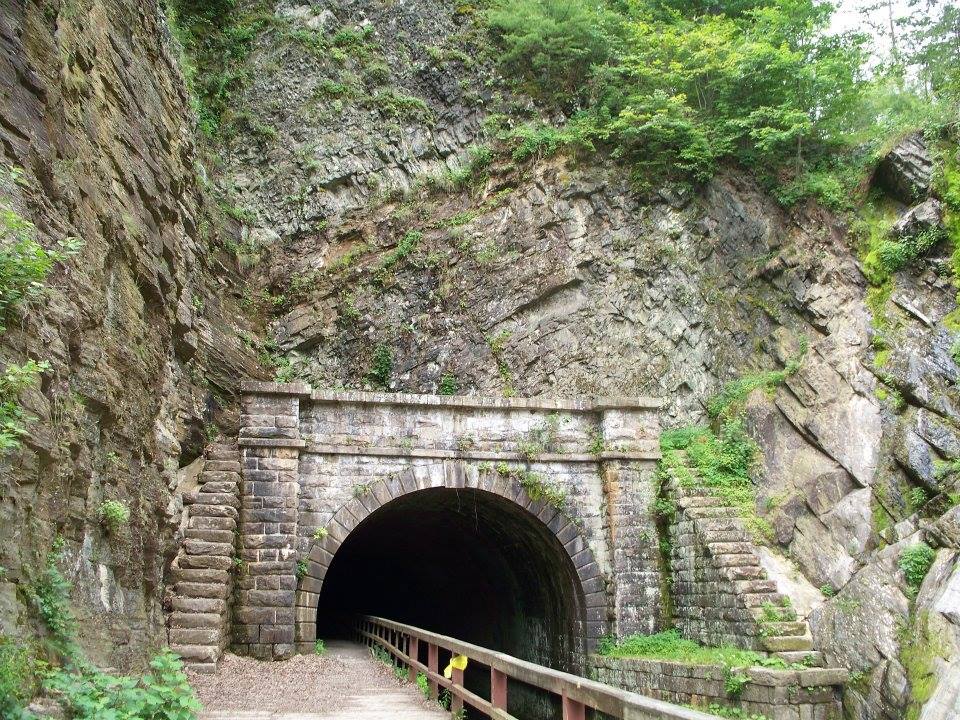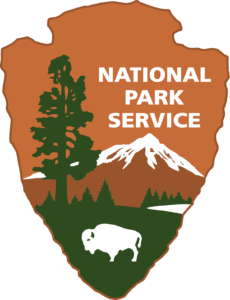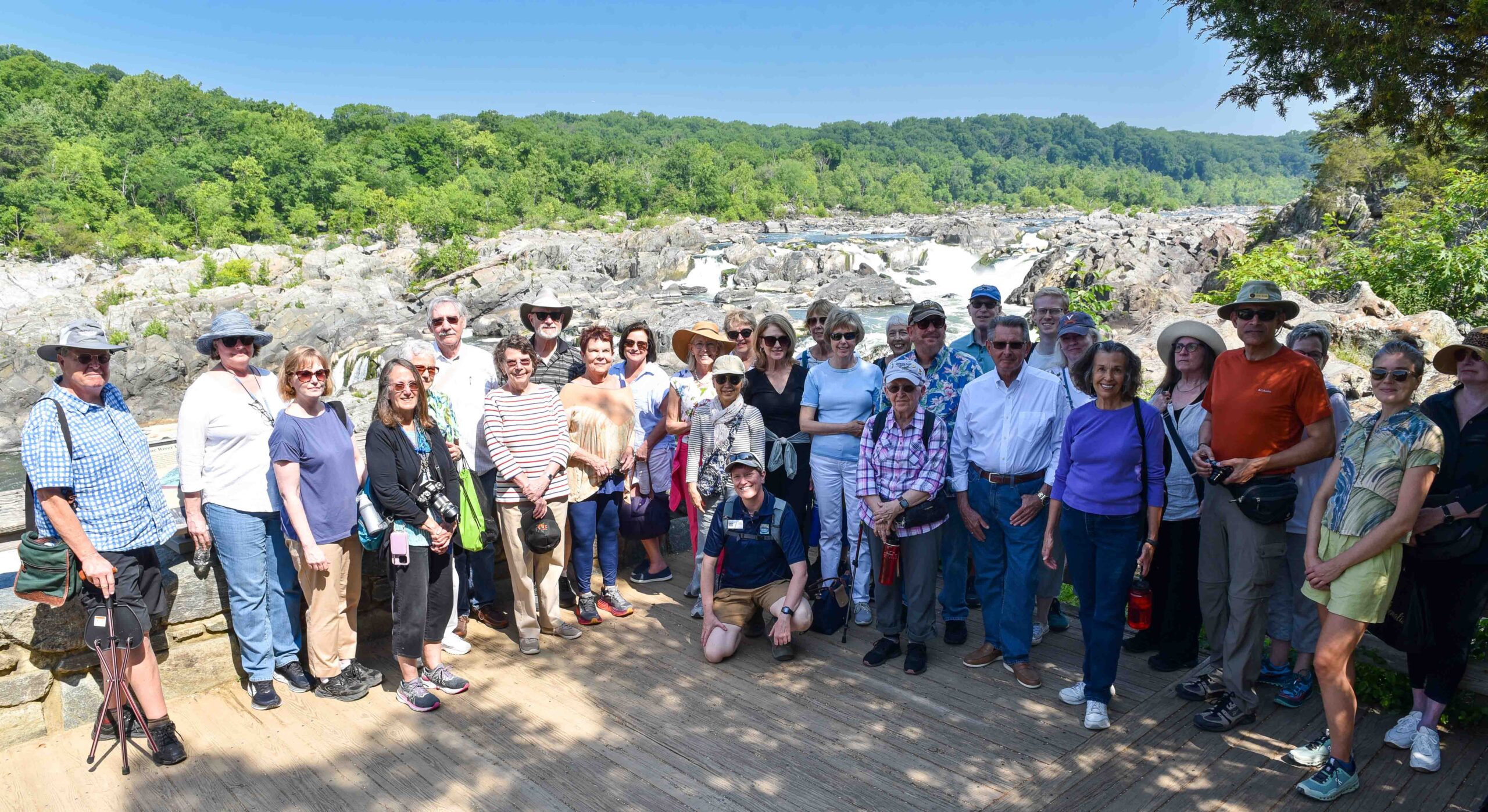
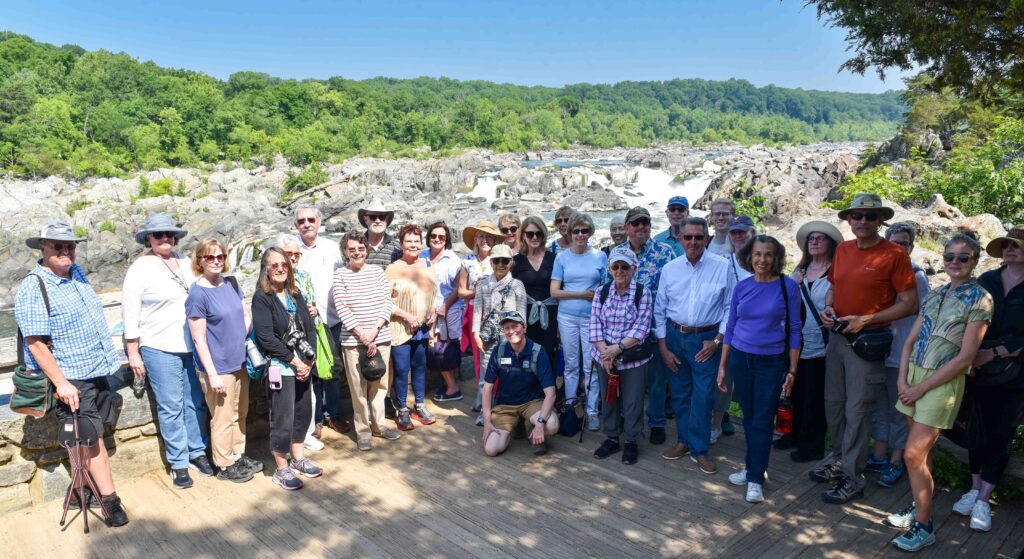
Smithsonian Associates group visits Great Falls in the C&O Canal NHP. Photo by Francis Grant-Suttie
The C&O Canal Trust partnered with Smithsonian Associates to provide a day-long tour of the C&O Canal National Historical Park on June 2. Thirty-six participants braved the heat to explore several parts of the Park, including Great Falls and Rileys Lock. The tour included a guided tour of Lockhouse 22 at Pennyfield. Lockhouse 22 is one of seven rehabilitated lockhouses in the Canal Quarters program, which gives visitors the opportunity to book up to three consecutive nights in a historic lockhouse. Read More

